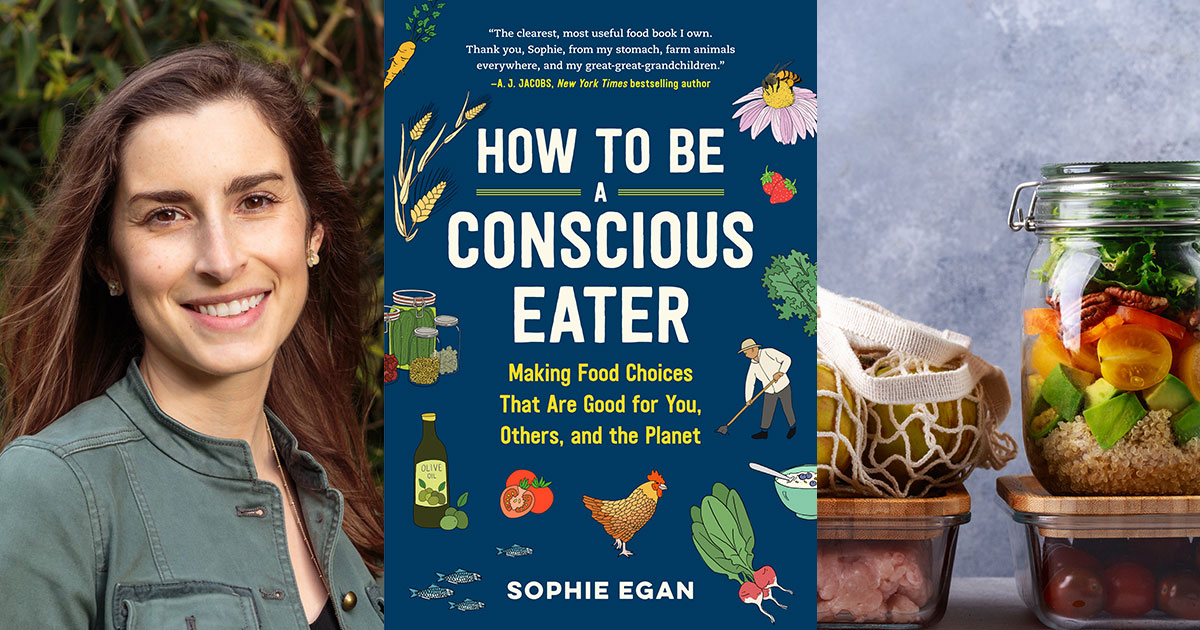Let’s Cook with Sophie Egan: 5 Easy Ways to Waste Less Food at Home
- by Guest

We’re inviting some of our trusted nonprofit partners, Star Chefs, and sustainability-focused authors to take over the Bon Appétit blog and share their best tips, recipes, and fun links. This week’s guest curator is Sophie Egan, author of the new book How to Be a Conscious Eater: Making Food Choices That Are Good for You, Others, and the Planet and founder of Full Table Solutions.
Staggering fact #1: If food waste were a country, it would be the third largest emitter after the U.S. and China.
Staggering fact #2: In the U.S., an estimated 40% of food is wasted.
Staggering fact #3: This massive food waste happens at the same time that more than 40 million Americans go hungry.
Much of the wasted food in the U.S. occurs at the household level, so in the spirit of making every day #StopFoodWasteDay — an initiative led by Compass Group — here are my top five ways to waste less food at home.
They’re drawn from my new book, How to Be a Conscious Eater: Making Food Choices That Are Good for You, Others, and the Planet (Workman, 2020). To me, conscious eating isn’t a diet or a fad, but rather, it’s using these three lenses as a mental checklist to evaluate which producers, farmers, companies, and restaurants are worthy of your food budget. Conscious eating is the lifelong intention to align your food choices with your values — voting not only with your vote but with your grocery basket, in order to support the things you care most about, from animal welfare and fair wages for food chain workers to your own nutrition and the preservation of .Earth’s natural resources for generations to come. In short, the book provides bottom-line answers to your most top-of-mind questions about what to eat. Spoiler alert: one of the most satisfying examples of good for you, others, and the planet? Wasting less food.
- Always use a shopping list. Making a list before grocery shopping is obvious, simple, and highly effective. Yet surprisingly few people use one. Those who do are less likely to succumb to impulse buys. (In the current grocery climate, an old-fashioned post-it note is likely your safest bet for said list, since the less you touch your phone while at the store, the better.) Also, before you check out at the register, take a moment to review every item in your cart and make sure you have a plan for using each one.
- Of all the things not to waste, red meat is the most important. Not all food waste has the same impact on the planet. Tossing an uneaten hamburger wastes the water equivalent of taking a 90-minute shower. For a tomato, it’s more like four or five minutes. So, in terms of lowering your carbon and water footprints — especially if eating less red meat feels like a tough lifestyle adjustment — not wasting the red meat you do purchase is a great place to start. What counts as “red” meat? Meat from mammals, which in the United States is usually beef, pork, and lamb. Common examples of things not to waste range from burgers you grill in the backyard to a supermarket deli sandwich you bring home to a broccoli beef stir-fry from your take-out order.
- Love your leftovers. Like produce, leftovers are one of the most commonly wasted types of food. This is one of several examples of how reducing food waste at home actually starts away from home: As restaurants begin to re-open and you’re tempted to order all the favorite dishes you’ve missed, think twice before you order, aiming for no leftovers. If you have any, eat or freeze them within four days. Designate a section of the refrigerator as “eat this first.” Use certain days of the week to focus on your leftovers — Stir-Fry Fridays, say, or Waste-Less Wednesdays.
- Make food visible. Fruits and vegetables are usually wasted because they spoil or get moldy. Make sure they don’t get pushed to the back of the fridge or buried in the crisper, or get dusty in a bowl on the table. Keep them where you’ll see them, and keep them looking ready to eat.
- Pop it in the freezer. It turns out, you can freeze just about anything, including bread (best if you slice it), cheese (best if you shred it), and even milk and eggs (best if you scramble them raw out of their shells first).
Bonus tip: Soups like The Kitchn’s Creamy Chicken Tortellini Soup are a great way to use things you might otherwise toss, like Parmesan rinds.